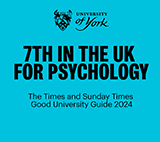
Seminars by academics from University of Aberdeen
Thursday 11 November 2010, 4.00PM to 17:30
Speaker(s): Professor David Lurie, Professor Thomas Redpath & Dr Hugh Seton
"Field-Cycling Magnetic Resonance Imaging"
Contrast between normal and diseased tissue in MRI arises mainly from differences in relaxation times. It is also well known from in vitro studies that the variation of T1 with field strength (T1 dispersion) changes from tissue to tissue, and may also be altered in disease. Thus, it is potentially useful to be able to measure T1 dispersion in vivo; however, this information cannot be obtained by conventional MRI scanners, which operate at fixed magnetic field. We are developing field-cycling MRI systems, in which the magnetic field is switched rapidly between levels during the pulse sequence, always returning to the same field for signal measurement. FC-MRI offers the possibility of new image contrast mechanisms based on T1 dispersion. In particular, immobilised proteins give rise to "quadrupole dips" in the dispersion curve, and this mechanism may give insight into the behaviour (and misbehaviour) of proteins in disease. This talk will discuss the methodology, technology and applications of FC-MRI.
Prof. Thomas Redpath"Dynamic contrast-enhanced MRI in breast cancer".
My talk will cover the basic physiology underlying dynamic contrast-enhanced MRI, the scanning methods used, and will describe the pharmaco-kinetic models used in analysing the signal versus time curves which are seen in breast cancers. The need for arterial input functions in the newer models will be discussed and a novel approach which we have proposed will be outlined. The particular problem of scanning at 3 tesla, namely RF pulse angle variation across the body, and methods of overcoming it will also be covered.
Dr. Hugh Seton
"Ultra-low field MRI with cooled receiver coils and SQUID preamplifiers"
"The presentation will describe MRI developments at 10-20mT. Imaging at such low fields has the potential to deliver improved contrast compared to high field, partly because T1 differences between tissues can increase at low field but also because there is greater flexibility to employ contrast-enhancing pulse sequences which would exceed RF power deposition limits at high field. Normally the SNR is poor at low field, but we have developed cooled receiver coils and ultra-low noise SQUID preamplifiers that yield 3-6 fold SNR gains compared to conventional room temperature coils."
Location: York Neuroimaging Centre - Open Plan area
